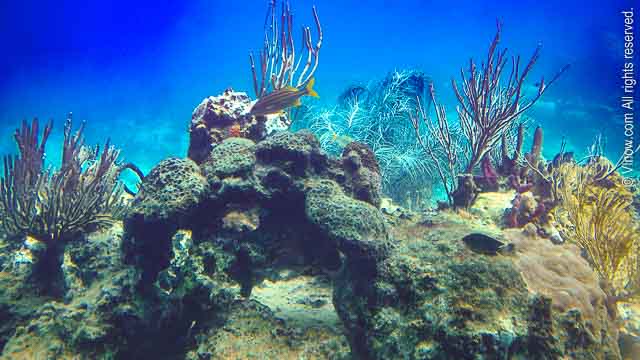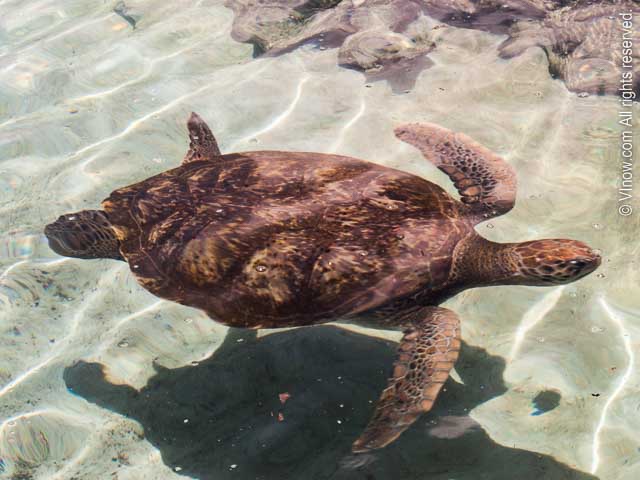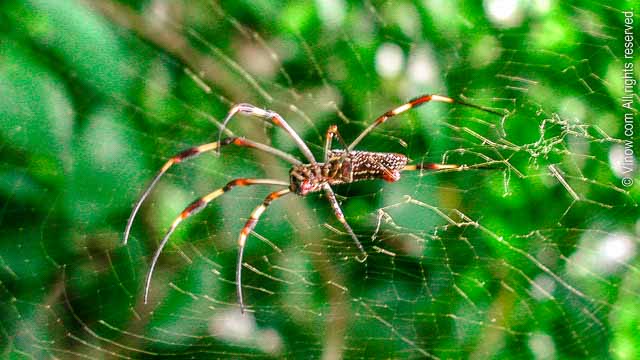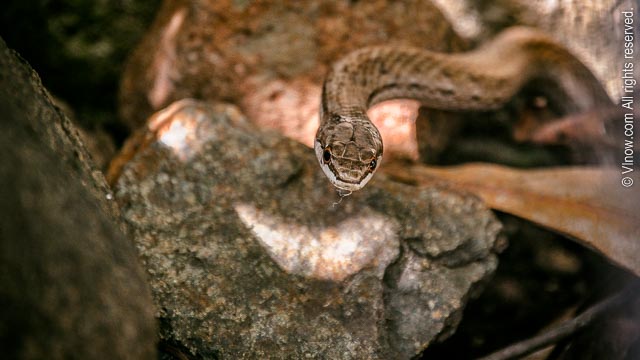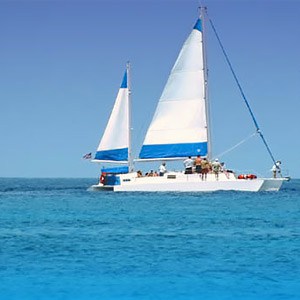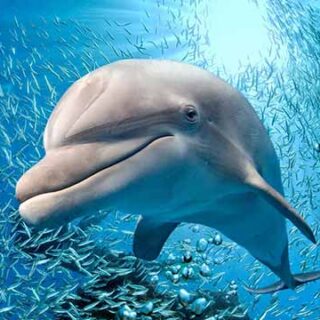When visiting different parks and nature reserves there is often a trademark regulation that sticks in a visitors mind. In caves it is don’t touch the stalagmites, stalactites and other formations. In deserts it’s don’t crush the soil crust, stay on trails. In parks with bears, it’s don’t leave food out. In the U.S. Virgin Islands it is do not step on or touch the coral! So let’s learn a little about coral reefs.
What is a coral reef?
A coral reef is a structure produced by living organisms, primarily stony corals that secrete an exoskeleton of calcium carbonate. It is the accumulation of the skeletal material which forms coral reefs. Coral reefs are most common in warm tropical waters and are home to hundreds of marine plants and animals. Indeed coral reefs are one of the most complex communities of plants and animals in the world. Rich in life, they offer a great contrast to the relatively barren sea floors of much of the ocean. Coral reefs are delicate; the life of the coral and the marine animals and plants that live on the coral reef can be destroyed by small changes in the surrounding environment.
What is coral?
Coral is the most important creature on the coral reefs. They are simple and tiny animals which belong to the group cnidaria. They are closely related to sea anemones and a more distant cousin of jellyfish. They live in colonies consisting of many individuals; each coral organism is called a polyp. They look like very little sea anemones with a ring of tentacles surrounding a central mouth. They are not mobile but stay fixed in one place. They secrete a hard calcium carbonate skeleton which serves as the base and as protection for their colony. Most coral polyps remain withdrawn in the reef structure during the day and extend their tentacles at night. Corals use their tentacles to capture prey such as small fish and animals as they pass by.
Where are coral reefs found?
Coral reefs can be found in tropical seas throughout the world. Two key factors that influence the ability for corals to exists and build coral reefs are temperature and light. Other factors include salinity, waves, nutrient levels and sedimentation; these factors can limit reef development.
Importance
Coral reefs are home to more than one quarter of all the known marine fish species. Reefs also provide a home for lobsters, crabs, shrimps, clams, starfish, worms, sea urchins and marine plants. The reef structure is used for protection and food. On a healthy coral reef every hole, cranny, crack and cavern is teeming with life forms. The immense biodiversity has caused coral reefs to be nicknamed ‘the rainforest of the sea’. In their relationship with man, they are important to the fishing industry and as tourist attractions. They provide protection for coastlines against erosion and provide sand for beaches.
Threatened
Coral reefs have existed for thousands of years; disturbances both natural and human-induced however threaten their health and growth. Coral reefs display an amazing adaptation to short term natural events like hurricanes; they usually recover. Coral reefs however are not well adapted to long term stress like pollution and runoff. Recreational activities (boats, jet skis, diving, snorkeling) also take a heavy toll on the integrity of coral reefs. Disruption causes a decrease in the general health of the reef and in the diversity of marine and plant life living on the coral reef.
What can you do to protect coral reefs?
Learn about corals and coral reefs; education is important. While snorkeling or diving remember that even the lightest touch with hands, feet or equipment can damage the delicate coral polyps. Avoid any contact. Snorkelers should wear flotation vest to allow for the opportunity to adjust gear without needing to stand. Never stand on a coral reef. Also avoid contact with rocks and other ocean bottom surfaces, areas that appear empty may support new growth that is just developing and if left undisturbed will grow. Do not touch or collect marine life. Do not feed fish and marine animals, this changes their natural behavior and diet and alters the natural life cycle of the coral reef.

